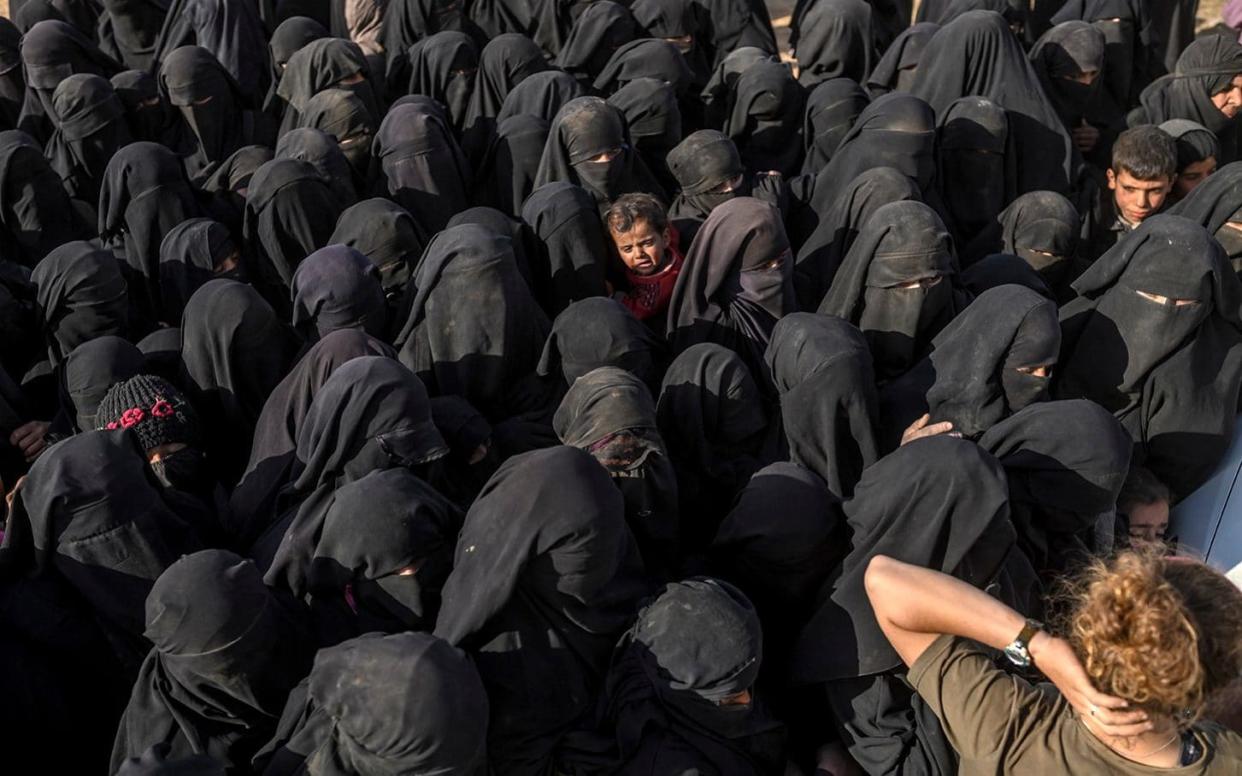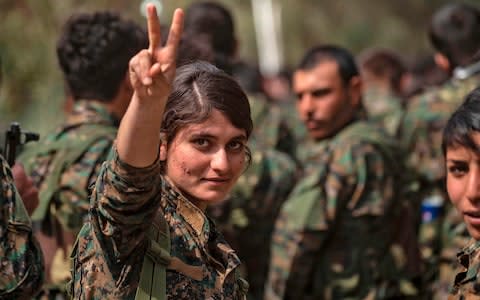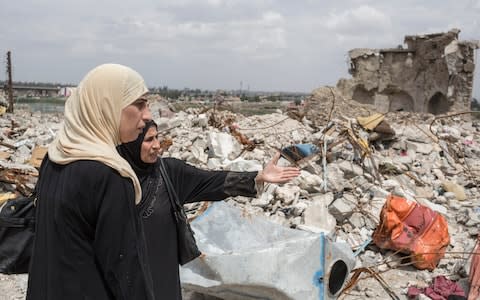Isil's caliphate may be defeated but cells' guerrilla tactics point to new deadly threat

The driver cocked his gun as he passed the last checkpoint before the vast no man’s land up ahead.
The stretch of open road between the eastern provinces of Hasakah and Deir Ezzor, or Highway Seven, has become the most dangerous in Syria.
While Western-backed Syrian Democratic Forces (SDF) on Saturday declared victory over Islamic State’s “caliphate”, the group's followers have for weeks been demonstrating they are still able and willing to carry out attacks in its name.
Detonating suicide car bombs, IEDs and carrying out roadside ambushes, Isil has been turning back to guerrilla tactics as it readies a new modus operandi.

Every few days the jihadist group shares news of its successes on official media channels, one of many arms of a propaganda operation which it has weaponised to inspire terror around the world.
“I read there was one in this very spot yesterday,” the driver, an ethnic Kurd from further north, said, warily eyeing a veering motorbike in front. He took off his North Face jacket in the hope of appearing less like an outsider to suspicious locals.
In the midst of celebrating its hard-won victory, the SDF was already cautioning that the fight against Isil was not over, but simply entering a new phase.
“When we go to the frontlines, we face them,” SDF commander Adnan Afrin said, not far from the battlefield before the caliphate was retaken. “We are fighting them on the ground. We know who is in front of us.

“But behind us are sleeper cells. The fight against the enemy you cannot see is much harder.”
The SDF arrested thousands of suspected Isil fighters during its three-year offensive, but US intelligence believes the group still has 15,000 to 20,000 armed adherents active across Syria and Iraq.
Terrorism experts say this is in all likelihood a modest estimate.
Members of the Isil’s senior leadership are also still alive, including its chief Abu Bakr al-Baghdadi, and thought to be hiding in desertland either in Anbar in western Iraq or Badia in central Syria, where Isil still has a presence.
They have been urging supporters to keep up the fight against SDF troops, saying their defeat in Baghuz - their final holdout - would not weaken the group, and pitching the assault as a setback in an epic struggle.
"Avenge the blood of your brothers and sisters... Set up the (explosive) devices, deploy the snipers," spokesman Abu Hassan al-Muhajir said in an audio message released earlier this week.

Images of the charred bodies of the women and child victims of coalition air strikes in Baghuz circulating on social media today will become Isil martyrdom propaganda tomorrow.
The group has sowed the seeds of an international network, with millions following its media output on encrypted channels.
It has inspired insurgent offshoots in troubled zones across the world - most notably Libya, Egypt’s Sinai Peninsula, Nigeria, Yemen, Afghanistan, and the Philippines.
The leaders ordered the last band of militants to surrender in the hope that they would live on to fight another day. They have long reconciled to losing their physical caliphate, but believe that such defeats are inevitable tests from God - who will ultimately grant them victory.

The challenge for the overstretched SDF will be holding ground as the jihadis seek to exploit the power vacuum after the US now begins to withdraw the majority of its 2,000 troops from the country.
“ISIS ruled as a caliphate for 1,737 days,” Hassan Hassan, senior nonresident fellow at Washington-based Tahrir Institute for Middle East Policy, tweeted on Saturday. “The Taliban ruled Afghanistan as a government for 1,836.
“The Taliban now controls more areas than it ever did since its collapse. Years from now, ISIS too will steadily be in de facto control of most of the areas it’s lost,” predicted Mr Hassan.
Formerly Isil-held cities Raqqa in Syria and Mosul in Iraq that were decimated by coalition air strikes are still counting the dead and struggling to rebuild.
There has been little in the way of reconciliation or rehabilitation for the communities who have been touched by the group's poisonous ideology, including thousands of orphaned children.

Tens of thousands of jihadis are now lingering in prisons and camps around northern Syria and neighbouring Iraq. Among them are at least 3,000 foreigners, whose fate has become a political minefield for Western governments.
It was in overcrowded camps like these that Baghdadi and a cadre of like-minded extremists formed the group that would later morph into Isil. Many fear history could repeat itself.
“Unfortunately Isil’s popularity has probably grown after the battle of the Baghuz,” said Aghiad al-Kheder, an activist from Deir Ezzor who fled Syria in 2015. “Isil isn’t in one place or another, it’s everywhere, hiding among us.”

 Yahoo News
Yahoo News 
